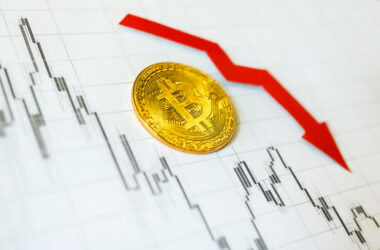As major Wall Street market movers make exchanging virtual currency part of their core business — while Bitcoin-only enterprises surge into mainstream markets — the lines between cryptocurrencies and other types of assets are blurring even more.
Institutional investors’ entry into the $1.3 trillion cryptocurrency market has increased the power of big banks and skilled traders. As a result, the spread between the prices of traditional assets such as equities and bonds and cryptocurrency has narrowed.
However, the bulk of these experienced investors may only exchange Bitcoin derivatives, not currency contracts, which has consolidated Wall Street’s dominance in futures trading and over-the-counter (OTC) transactions such as ‘non-deliverable forwards.’
This concentration on derivatives has increased exchange rivalry for a growing portion of the digital asset market.
According to Adam Farthing, senior risk officer of Japan at crypto-specialist retail investor B2C2, skilled traders’ impact on the marketplace is already obvious.
Tether, a prominent stablecoin that is generally priced in accordance with the US dollar, lost its linkage to the currency in recent weeks, causing one of the biggest shake-ups in cryptocurrency history. This sent shockwaves through the virtual equity market, wiping out trade positions worth billions of dollars.
Since the beginning of the month, the two most valuable crypto tokens, Bitcoin and Ethereum, have lost double digits worth of percentage points.
Price movements in cryptocurrency futures, on the other hand, have been far more moderate than anywhere else, and discontinuities throughout exchanges, which can lead to trading opportunities, are now far fewer than in prior instances of market turmoil, according to Farthing.
With all of the doomsaying surrounding crypto markets, it’s important noting that futures markets are progressively behaving maturely, Farthing added.
As experienced traders strive to restrict their digital asset transactions to a highly regulated marketplace, ongoing volatility has propelled trading in cryptocurrency futures contracts just on Chicago Mercantile Exchange (CME) to historic highs.
However, in foreign exchanges, which are less governed, retail customers trade even bigger volumes of futures contracts every day. FTX, Binance, and OKex are among them.
Futures and options, for example, are appealing because they allow investors to bet on price movements within a pre-determined timeframe while only laying down a small portion of the total value of their transactions in advance. However, the capacity to leverage trades magnifies the outcome, resulting in considerably higher potential losses.
Futures are even simpler to monitor from a credit, regulatory, and legal standpoint for highly regulated organizations such as banks since they do not require the physical possession of the underlying securities.
With these benefits driving better professional trading of cryptocurrency futures, exchanges are vying to be the largest in the market.
Even as crypto markets endure one of its greatest ever mishaps and fears rise that a lengthy period of low action could reduce trading revenues, competition amongst exchanges for a piece of the crypto market has gotten tougher than ever.
Although there isn’t a clear limit on how many transactions the cryptocurrency market can sustain, as predicted by Nicky Maan, CEO of Spectrum Markets (which provides investors with securitized crypto derivatives), he also believes that a few major companies may emerge over time.
Within the next 60 months, he predicts tremendous growth (on markets) compared to OTC.
Traditional exchanges are likewise eager to gain a piece of the booming crypto trading business, having watched the digital asset start-up colleagues reap handsome profits for years.
Cboe and CME were among the first to offer Bitcoin futures contracts in 2017.
SIX and Eurex, both based in Switzerland, are now introducing derivatives.
Simultaneously, specialized cryptocurrency exchanges are making inroads into the heavily controlled US derivatives markets. They do so in part to meet the needs of demanding retail customers who wish to exchange commodities and contracts across all markets.
However, the main cryptocurrency exchanges are considering expanding into traditional professional marketplaces.
Numerous cryptocurrency exchanges have purchased minor traditional exchanges in recent months to accelerate its entry into traditional markets, especially derivatives.
The Bottom Line
The way that people are trading cryptocurrencies is beginning to change. By looking into futures markets rather than a traditional wallet and exchange-based trading method, a whole new world of possibilities is being opened up.
WeInvests is a financial portal-based research agency. We do our utmost best to offer reliable and unbiased information about crypto, finance, trading and stocks. However, we do not offer financial advice and users should always carry out their own research.
Read More













